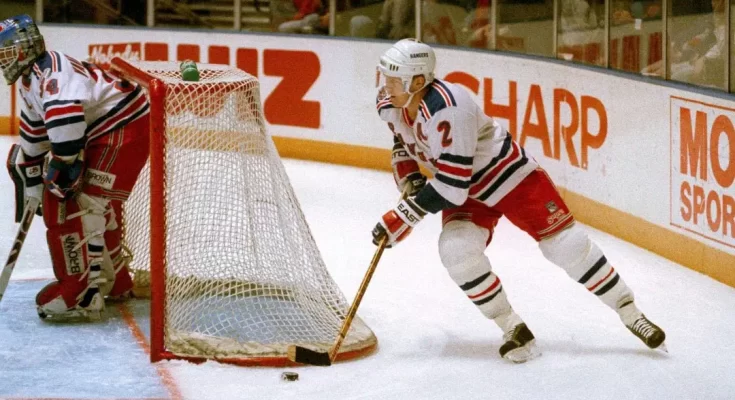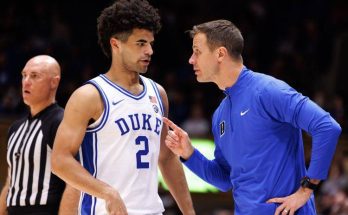One of the NHL’s Original Six teams, the New York Rangers, have a rich history with several iconic players who have left an
The New York Rangers, established in 1926, stand as one of the NHL’s most storied and revered franchises, holding a firm place in hockey history as one of the Original Six teams that laid the foundation for the league’s growth in North America. With their home at the world-famous Madison Square Garden, the Rangers quickly became an integral part of New York City’s sports identity and helped popularize ice hockey in the United States during a period when the sport was largely dominated by Canadian teams and players. Over the decades, the franchise has experienced periods of triumph and heartbreak, with iconic players etching their names into both the Rangers’ legacy and the broader narrative of the NHL. The early years of the franchise were marked by immediate success, as the Rangers captured their first Stanley Cup in just their second season, 1927–28. Coached by Lester Patrick, who also famously took over as goaltender during the Finals due to injury, the team embodied grit and determination. In the following decade, the Rangers would go on to win two more Stanley Cups, in 1933 and 1940, solidifying themselves as a premier franchise in the league’s formative years. However, what followed was a prolonged drought that would stretch over fifty years, during which the team remained competitive but often fell short in crucial moments. Despite the lack of championships during that stretch, many players became beloved figures and left an indelible mark on Rangers history.
In the post-World War II era, players like Andy Bathgate became synonymous with excellence and leadership. Bathgate, known for his smooth skating and offensive prowess, won the Hart Trophy as the league’s most valuable player in 1959 and was later inducted into the Hockey Hall of Fame. Alongside him were players such as Harry Howell, a steady and reliable defenseman who played over 1,000 games for the Rangers and won the Norris Trophy in 1967. Yet despite these individual accolades, team success remained elusive. The 1970s brought a renewed sense of hope, largely due to a new core of players who energized the fan base and made the Rangers perennial contenders. Rod Gilbert, Jean Ratelle, and Vic Hadfield formed the famed GAG Line—Goal A Game—dominating the score sheets and playing with a flair that captured the imagination of hockey fans across North America. Gilbert, who would eventually become the first Ranger to have his number retired, was especially cherished for his loyalty to the team and his consistent offensive production, finishing his career as the franchise’s all-time leading scorer at the time.
The Rangers reached the Stanley Cup Final in 1972 but fell to the Boston Bruins, led by Bobby Orr. Though they remained competitive throughout the decade, the team struggled to break through in an increasingly tough league, with expansion bringing in fresh talent and diluting the Original Six dominance. The 1980s were marked by inconsistency, but they introduced a new generation of fans to the talents of players like Ron Greschner, a versatile defenseman who became a fan favorite, and John Vanbiesbrouck, a goaltender who would go on to win the Vezina Trophy in 1986. Despite flashes of brilliance and several playoff appearances, the Rangers remained on the periphery of true contention. The turning point came in the early 1990s, when the franchise underwent a transformation both on and off the ice. The acquisition of superstar center Mark Messier in 1991 from the Edmonton Oilers was a seismic event in Rangers history. Messier brought with him not only a championship pedigree, having won five Stanley Cups with the Oilers, but also an unmatched leadership quality that immediately elevated the expectations of the team and its fans. Under his captaincy, the Rangers adopted a new identity—one defined by accountability, professionalism, and an unyielding desire to win.
The 1993–94 season would go down as the most celebrated in the franchise’s modern history. Led by Messier, along with key contributions from Brian Leetch, Adam Graves, Mike Richter, and Sergei Zubov, the Rangers captured the Presidents’ Trophy as the league’s best regular season team and embarked on a dramatic playoff run that captivated the city and the hockey world. Perhaps no moment was more emblematic of that season than Messier’s legendary guarantee in Game 6 of the Eastern Conference Finals against the New Jersey Devils. Facing elimination, Messier publicly promised a victory and delivered a hat trick to force a Game 7, which the Rangers would win in double overtime on a goal by Stephane Matteau—a moment forever etched in Madison Square Garden lore. The Rangers would go on to defeat the Vancouver Canucks in a thrilling seven-game Stanley Cup Final, finally ending their 54-year championship drought. Brian Leetch, who had an exceptional postseason, became the first American-born player to win the Conn Smythe Trophy as playoff MVP. The triumph was a cathartic release for generations of Rangers fans and solidified the legacy of that core group of players.
Following the 1994 championship, the Rangers struggled to maintain the same level of success. Many of the key figures from the Cup-winning team retired or were traded, and despite high-profile signings such as Wayne Gretzky, who reunited with Messier in New York, the team was unable to replicate its earlier glory. Gretzky, though past his prime, provided fans with glimpses of his genius and further elevated the Rangers’ profile during his three seasons with the team before retiring in 1999. The early 2000s were a particularly difficult period for the franchise, marked by mismanagement, underachievement, and a revolving door of coaches and players. It wasn’t until the arrival of goaltender Henrik Lundqvist in 2005 that the Rangers began to regain their footing. Selected in the seventh round of the 2000 NHL Draft, Lundqvist emerged as one of the greatest goaltenders of his generation and arguably the most important Ranger of the 21st century. Known for his calm demeanor, athleticism, and competitiveness, Lundqvist quickly became the backbone of the team and helped end a seven-year playoff drought in his rookie season.
With Lundqvist in net, the Rangers became a perennial playoff team once again. The team’s identity evolved under head coach Alain Vigneault in the early 2010s, blending speed, defense, and elite goaltending into a formidable package. Players like Ryan Callahan, Derek Stepan, Dan Girardi, Marc Staal, and later Chris Kreider and Mats Zuccarello became fixtures in a tight-knit group that made several deep playoff runs. The 2013–14 season saw the Rangers reach the Stanley Cup Final for the first time in twenty years, but they fell short against the Los Angeles Kings in five games, with three of the losses coming in overtime. While the Cup eluded them, the team’s performance reignited interest and passion among the fanbase, affirming their return to relevance. Lundqvist’s heroics throughout his career earned him the nickname “King Henrik,” and although a Cup ultimately eluded him, his impact on the franchise was immeasurable. By the time he left the Rangers in 2020, Lundqvist held nearly every significant goaltending record in team history and had earned the Vezina Trophy in 2012.
As the team transitioned into a new era, a rebuild was initiated that saw the departure of many long-time veterans in favor of a youth movement. The Rangers began stockpiling draft picks and prospects, and the results began to materialize with the emergence of young stars such as Igor Shesterkin, Adam Fox, Alexis Lafrenière, and Kaapo Kakko. Fox, a defenseman with elite offensive instincts and skating, won the Norris Trophy in 2021, joining Leetch as the only Rangers to ever earn the honor. Shesterkin, the heir apparent to Lundqvist, captured the Vezina Trophy in 2022, solidifying his status as one of the league’s premier goaltenders. Under the leadership of head coach Gerard Gallant, the Rangers made a surprising run to the Eastern Conference Final in 2022, falling to the Tampa Bay Lightning but signaling that they were once again serious contenders. The acquisition of high-profile talent like Artemi Panarin in free agency, and key trades for veterans like Vincent Trocheck and Vladimir Tarasenko, further bolstered the roster and added depth to a young core that is expected to compete for years to come.
The Rangers’ history is not just a story of wins and losses, but of resilience, reinvention, and an enduring connection to one of the world’s greatest cities. From the earliest days of Lester Patrick and the first Stanley Cup, through the heartbreaks of the mid-century years, to the glorious night in 1994 and the modern era’s return to contention, the franchise has consistently found ways to captivate and inspire its fans. The team’s legacy is also inseparable from the aura of Madison Square Garden, often referred to as “The World’s Most Famous Arena,” which has hosted countless unforgettable moments and served as a beacon for hockey excellence in New York. The Rangers have also played a key role in promoting the sport in the United States, producing American stars and helping the NHL grow into the modern, global league it is today. With a passionate fan base, a renewed commitment to building through both youth and experience, and a deep respect for the players who helped forge their identity, the New York Rangers remain one of the most iconic and beloved franchises in the NHL, and their story is far from finished.



